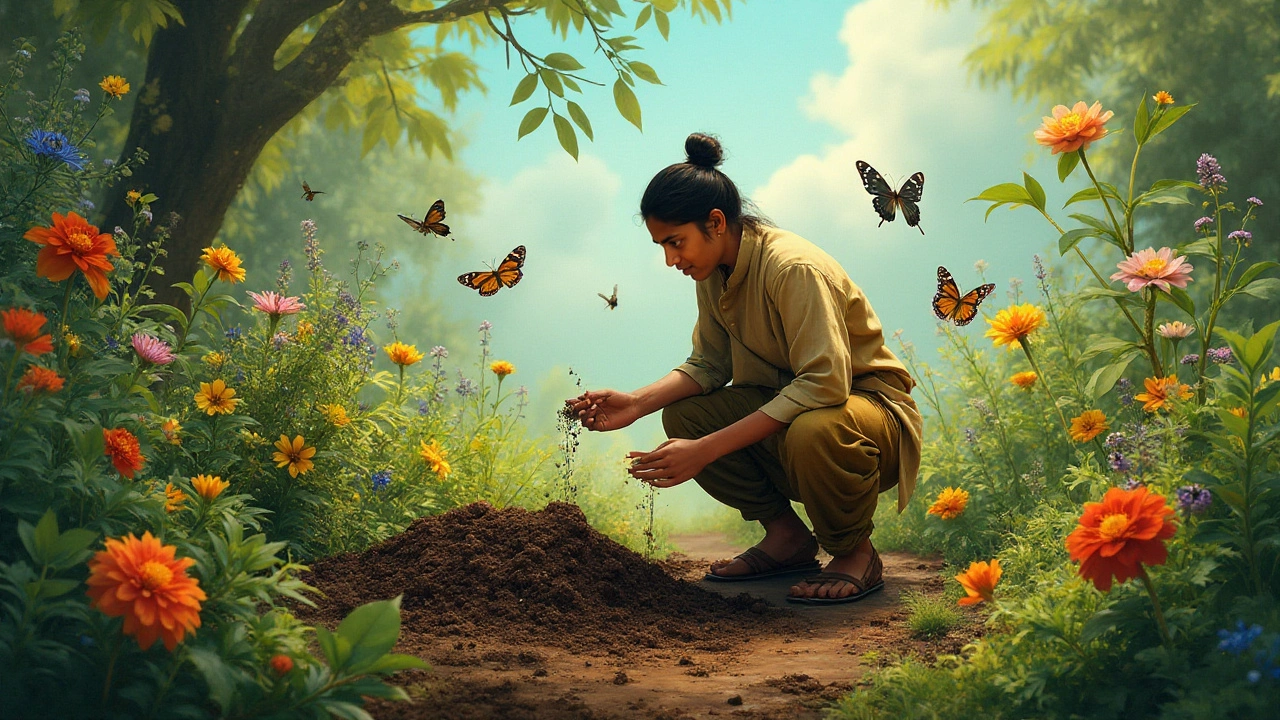Dive into the world of ecosystem gardening and discover how to create your thriving sanctuary right in your backyard. Learn about the essential elements needed for a balanced ecosystem, including plant diversity and natural pest control. This guide offers step-by-step instructions for implementing sustainable gardening practices, enhancing biodiversity, and minimizing environmental impact. Embrace the beauty of working alongside nature with these simple and effective techniques.
Biodiversity in Indian Gardens: Why It Matters and How to Grow It
When you think of biodiversity, the variety of life in a given area, from microbes in the soil to butterflies on your jasmine. Also known as ecological richness, it’s what keeps your garden alive without chemicals. It’s not about having the most flowers—it’s about having the right mix. In India, where monsoons, heat, and urban balconies challenge traditional gardening, biodiversity is your secret weapon. A garden with diverse plants, insects, and soil life doesn’t just look good—it fights pests, holds water better, and needs less help from you.
Think of native plants, species that evolved in India’s climate and soil conditions. Also known as local flora, they’re the backbone of any biodiverse garden. Plants like neem, tulsi, or marigold don’t just look pretty—they attract bees, repel pests, and survive dry spells without extra watering. They connect with local pollinators that foreign plants can’t. And when you grow them, you’re not just gardening—you’re helping restore a natural balance that’s been lost in concrete jungles.
Soil health, the living ecosystem under your plants’ roots. Also known as living soil, it’s where biodiversity starts. Healthy soil isn’t dirt—it’s a bustling city of worms, fungi, and bacteria. Add compost, and you’re feeding that city. Skip synthetic fertilizers, and you let the microbes do their job. The posts below show how to build this soil with kitchen scraps, leaf mold, and simple techniques that work in Indian homes. You’ll see how one gardener in Pune revived her clay soil using only compost and mulch—and how another in Bangalore turned his tiny balcony into a buzzing insect haven.
And then there’s the quiet hero: organic gardening, growing food and flowers without chemicals, letting nature lead. Also known as natural gardening, it’s not a trend—it’s the only way biodiversity thrives. When you avoid pesticides, you let ladybugs eat aphids. When you plant a mix of flowers and veggies, you confuse pests and feed pollinators. The posts here cover everything from fixing clogged drip lines to choosing the right plants for year-round blooms—all with biodiversity in mind. You’ll find how to protect zinnias from rabbits without poison, how to make compost that feeds the soil, and why the best balcony plant might just be basil growing next to a native shrub.
This isn’t about perfection. It’s about participation. Whether you have a rooftop in Delhi or a windowsill in Kochi, every plant you choose, every scrap you compost, every inch of soil you nurture adds to a bigger picture. The garden you grow today doesn’t just feed you—it helps rebuild the web of life around you. Below, you’ll find real stories from Indian gardeners who’ve done exactly that—no fancy tools, no expensive imports, just smart, simple choices that bring nature back to their doorstep.
